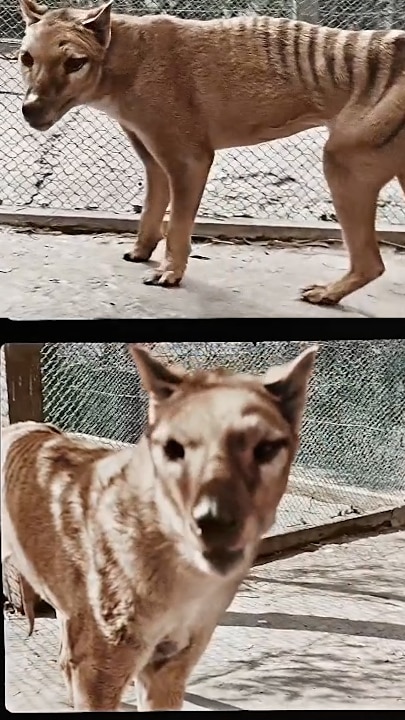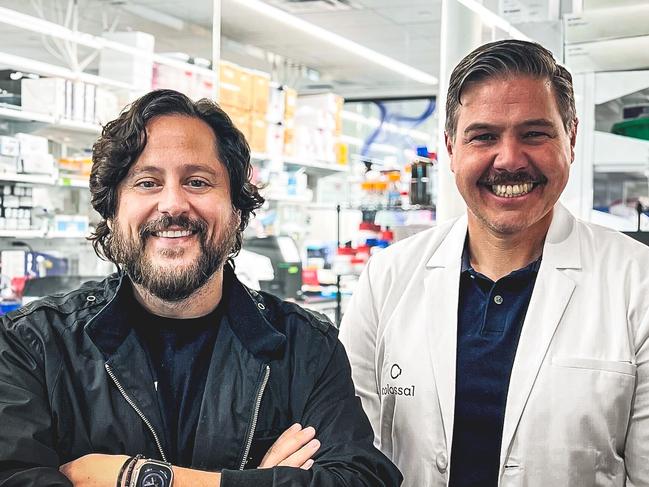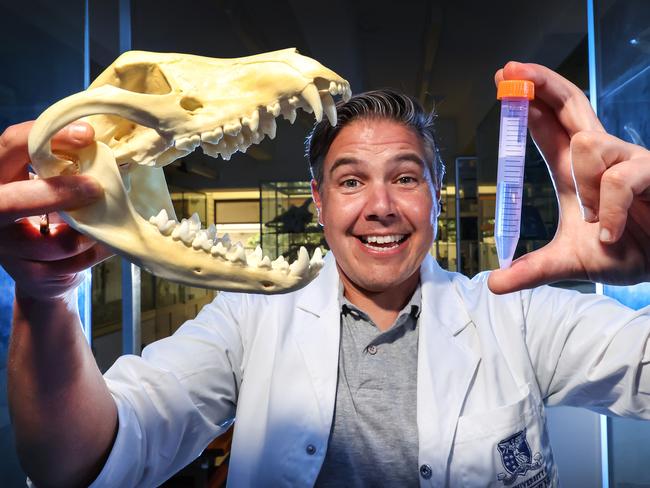Tassie tiger a step closer to coming back to life thanks to creation of genome
A project to bring the extinct Tasmanian tiger back to life has achieved a major breakthrough after a full genome of the marsupial was created by scientists.

Victoria
Don't miss out on the headlines from Victoria. Followed categories will be added to My News.
The project to bring the extinct Tasmanian tiger back to life has achieved a major breakthrough with researchers creating a full genome of the marsupial.
The team, headed by Melbourne University scientist Andrew Pask says a reborn thylacine “100 per cent” would be recreated, possibly within three years and with a likely full return to the wild within a decade.
The last known thylacine died in Beaumaris Zoo in Hobart in 1936.
The creation of the genome – a complete set of genetic material – means a major step forward for the researchers who are using DNA from remaining specimens of the animal.

The project, with echoes of Jurassic Park, is funded and run by US de-extinction and species preservation company Colossal.
Professor Pask, head of the TIGRR (Thylacine Integrated Genomic Restoration Research) lab at Melbourne University, praised Colossal’s “juggernaut” support for the project which had produced the genome.
“It’s a big deal. The genome we have for it is even better than we have for most living animals which is phenomenal,” he said.
“If you’re bringing an animal back the first thing you need is that set of instructions – that full genome.

“It has exceeded what any of us thought was possible.’’
Professor Pask said the disappearance of the thylacine, an apex predator, had affected Tasmania’s ecosystem.
He said the team had started work on creating embryos from the cells which would then have its “DNA edited’’.
The embryos will be used in the thylacine’s closest living relative, a small marsupial called the dunnart, which is 99.5 per cent similar in genetic make-up.
“There’s no magic in de-extinction technology,’’ Prof Pask said.
“There’s nothing we have to create that doesn’t already exist.’’
“We will definitely see de-extincted animals in our lifetime, there’s no question about that.”
“The bigger question to ponder is what do we want to use this technology for.’
The science community had changed its tune on this technology over recent years, realising the reality of the advances, he said.
“We in Australia have the highest rate of mammal extinctions of any country in the world which is deplorable and inexcusable.
“We have to put the brakes on this and de-extinction technology gives us one tool in our tool kit.’’
Colossal has also announced its progress in engineering resistance to cane toad toxin in marsupial cells.

“By changing a single base in a 3-billion base pair genome, we can make the endangered northern quoll go from completely susceptible to cane toad toxin, to among the most resistant species to this toxin on earth,” Prof Pask said.
Ben Lamm, Colossal chief executive and co-founder said the de-exinction technology could also protect critically endangered species.
“These discoveries echo the importance of developing tools for conservation and then further funding conservation research and development through our Colossal Foundation,” he said.
Mr Lamm and Prof Pask will speak on the latest developments at SXSW Sydney on Thursday.



